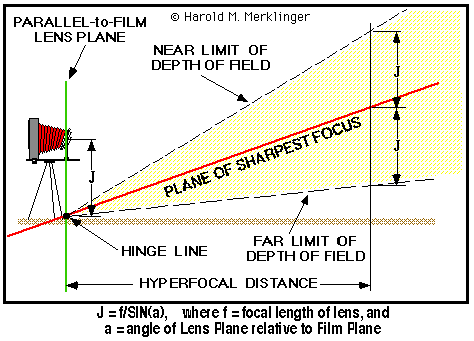I keep reading this Terry and I haven't managed to figure out what you mean....can you elaborate please.
Bob
In Terry's absence, tilt doesn't increase depth of field per se, it just swivels the plane of sharp focus.
If you were doing a food shot with a selection of dishes spread out over the table in front of you, by tilting the lens down you can move the plane of focus closer to the plane of the table, where you want all the dishes to be sharp from front to back. Then with a moderate f/number you can pull them all sharp. Does that make sense? But in doing this, DoF is reduced in all other planes.
DoF is like a plane of glass in front of the lens, parallel to it. As you increase f/number and with it DoF, the glass becomes thicker (much thicker, like yards and yards thick!). As you tilt the lens, you also tilt the glass.
I don't accept what Terry has said about T&S lenses being compromised by not having movements for the sensor/film, as you do with a monorail large format camera - it's just less convneinet. What you have to do is move the entire camera and lens on the tripod head so that the sensor is angled in the way you want it, then adjust the lens to suit. It's the same difference.
In practice however, you can't do very much with that on a small format camera. Not only is there very little room in there to manoevre the lens, depth of
focus is very narrow with short focal lengths so you soon run out of scope. Standard lens on a 5x4in camera is 150mm with a lot more depth of focus (but less depth of field); on 10x8in it's 300mm and you can swing the back by several cms quite easily. Scheimpflug Rule and all that.
Edit: did somebody mention the article in this month's Digital SLR User Magazine (Aug edition)? It's quite good, and you don't often read about T&S lenses in action. I have to say is pretty unconvincing in terms of what you get for your money and the best reason given is extending effective depth of field. It gives you enough DoF in landscapes with a low f/number so you can use a faster shutter speed to stop flowers blowing about. Well, that's going to be handy three times a year. Worth reading for anyone thinking about spending a four figure sum.




